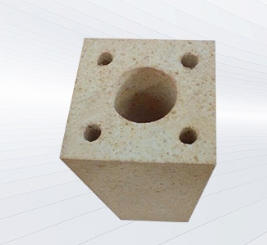- 25
- Sep
Burner brick for industrial furnace
Burner brick for industrial furnace

Product advantages: high temperature resistance, erosion resistance, high structural strength, good integrity, good thermal shock stability, long service life, etc.
Product application: Industrial kiln burners such as building ceramics and daily-use ceramics. Frequent temperature changes, high strength requirements, wear resistance,
product description
The burner is also called the burner, which is a combustion device for the gas port on an industrial fuel stove, and can be understood as a “fire nozzle”. Usually refers to the body part of the combustion device, which has a fuel inlet, an air inlet and a spray hole, which plays the role of distributing fuel and combustion-supporting air and spraying it out in a certain way for combustion. There are two commonly used burner brick production processes, refractory brick masonry and castable integral prefabrication. The burner bricks currently in use are basically made of refractory castables and vibrated at one time through a special mold.
The functions of burner bricks on the kiln are:
1. Heat the fuel in the burner brick to the ignition temperature to make it easy to ignite and burn quickly;
2. Maintain a certain high temperature in the burner brick to stabilize the combustion process and avoid pulsation or interruption of combustion;
3. Organize the flame shape to meet the requirements of the heating process;
4. To further mix the fuel and air.
According to different materials, it is divided into four categories: corundum, high aluminum, silicon carbide, and mullite. According to requirements, different materials are selected as aggregate and powder, and composite additives are added. Aluminum phosphate is used as a binder. The vibration is formed and baked. Become. ,
Physical and chemical indicators
| Product name | Corundum | High aluminum | Silicon carbide | Mullite |
| Bulk density (g/cm3) | 2.8 | 2.7 | 2.7 | 2.7 |
| Compressive strength 500℃ baking (MPa) | 100 | 75 | 75 | 90 |
| Line change after burning (%) (℃xh) | 0.3 (1550×3) |
0.4 (1350×3) |
0.2 (1400×3) |
0.3 (1400×3) |
| Refractoriness (℃) | >1790 | 1730 | 1790 | 1790 |
| A12O3(%) | 92 | – | – | 82 |
| SiC (%) | – | 88 | 88 | – |
